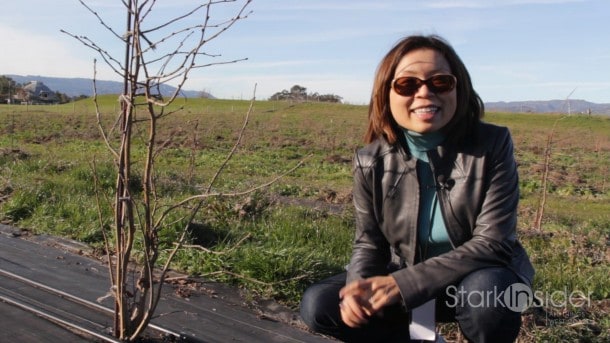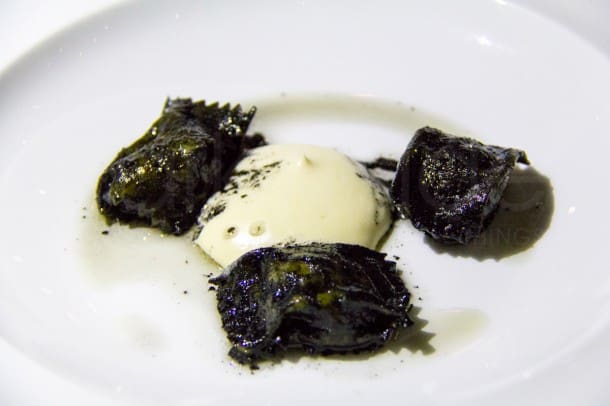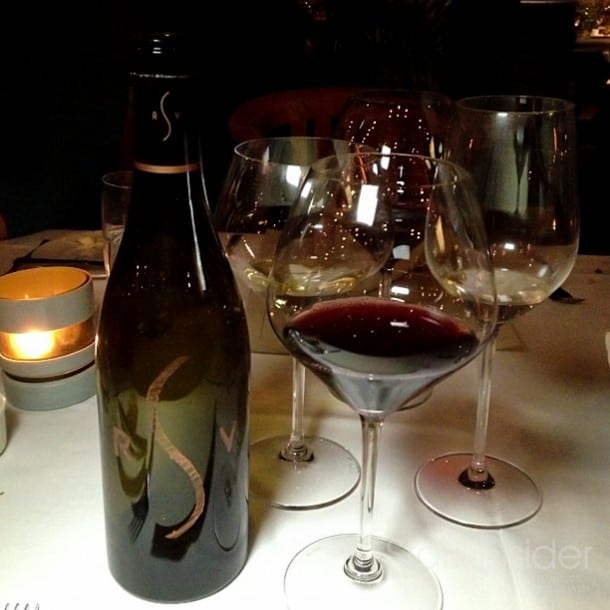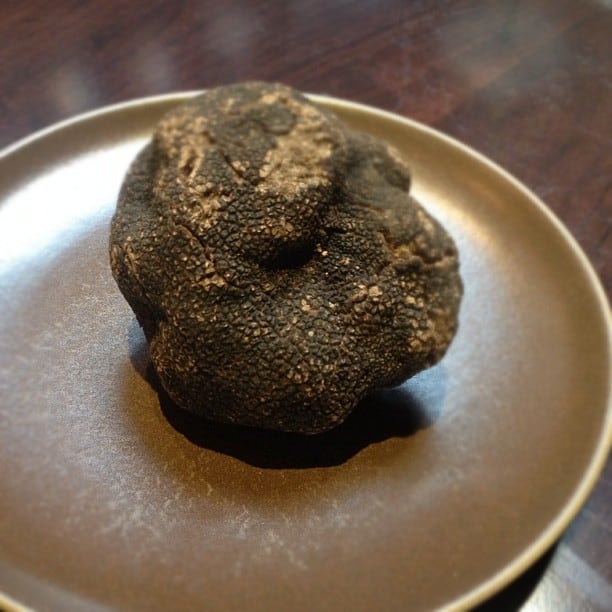
This weekend I discovered a large cover-up in Napa. It involves rare and expensive goods. One of the main perps appears to be operating out of Robert Sinskey Vineyards. The owner — who himself looks like a ringleader if you ask me — would only say, “Hopefully we’ll have a truffle while my dogs are still on this planet to dig up a few.”
Unfortunately, there are no black market diamonds, fraudulent wines, or forged Picassos in this story. Instead, think mycology.
Truffles sell for $500-$1,000 per pound, so you quickly learn the rational as to why some winemakers and property owners across the Napa Valley would take the risk and cultivate them. The cover-up part has to do with the fact that, as I learned a few years back when I first attended the Napa Truffle Festival, truffles grow under-ground. So it’s hard to tell exactly how things are progressing. It will take about 5 or 6 years to even see any results (if any). Meantime balancing pH levels, managing irrigation cycles, and performing regular maintenance are critical.
WATCH: Truffles in America
Another interesting facet of cultivating truffles is their shelf life: it’s dramatically short. Dr. Paul Thomas, who focused his research on long distance signaling pathways within the plant kingdom (no, they don’t use Twitter) which is central to truffle cultivation told me that a truffle at its peak lasts on average only 8 days. Just 8 days! That means you have little over a week to get it out of the ground, shipped to a distributor/restaurant, into a kitchen or shop, and then into the hands or plates of end consumers. It helps explain why importing them is such a costly affair. They need to be transported overnight, and that costs a day right there. Anytime you enjoy a truffle in America, just imagine the long journey it had just days before from Italy, Spain or France.

This was my second time attending the event. It will be especially interesting to see how these early adopters fare. Will the truffle orchards produce gold? Or will they result in failure?
Come 2015-2016 an eager group of domestic truffle hunters will find out.
We’ll have more on the story. On the culinary side, Little Loni has interviews coming with some of the central figures including Robert Chang, owner of American Truffle Company, who is making a big bet that these early investments will ignite a domestic truffle business. I’m sure she’ll also have something to say about the incredible Truffle dinner at La Toque (which is the centerpiece of the weekend). Media, truffle hunters, and trade met up at Chef Ken Frank’s restaurant for an evening not soon forgotten.
ALSO: Chateau Montelena Chardonnay – A Napa Valley Classic (Review)
At that 5-course dinner, I had the good fortune to sit next to some folks from family-run (still!) Silver Oak Cellars. Earlier in the day I was able to taste through their latest releases (Twomey and Silver Oak).
Among the group at our table was Chef Orsini, one of a handful of full-time “winery chefs” in Napa. Fine dining and wine service take on a whole new meaning when you’re surrounded by people in the industry. All of a sudden, butter service can be an engaging topic of conversation for twenty minutes. Things that would otherwise go unnoticed become entertaining debates, like whether or not that creamy/cheesy-like paste on Chef Michael Tusk’s (Quince, San Francisco) Fagotelli of Four Story Hill Farm of Sweetbread was actually “foam” or not (it was):

Equally memorable on Saturday evening were the wine parings. The Somms (and I’m guessing Ken Frank and the guest Michelin chefs helped too) did exemplary work. The wines in question:
Champagne Roederer Brut Premier
Robert Sinskey Vineyards, Pinot Gris, Los Carneros, 2008
Meursault-Perrières, 1st Cru, Joseph Drouhin, 2006
Robert Sinskey Vineyards, Pinot Noir, Trotter Cuvée, Vandal Vineyard, Los Carneros, 2000
Barolo, Luigi Einaudi, 2004
Out of the lot, which we all agreed were superb, Sinskey’s label-less ’00 Pinot was the most discussed – the initials “R S V” were painted on the bottle, but not much else was there to identify the wine. The Silver Oak team raved, calling it a “shiner” they could drink all night. Chef Orsini, seated to my left, said “This thing is Brett crazy, and I love it.” Shiners are wines that don’t have a label, and thus avoid Government regulation. Usually they’re made for friends and family – wines made for fun, or experimental stuff, or perhaps a winemaker’s best kept secret. Half of this barrel was bid on and won by Charlie Trotter, and we were fortunate enough to be enjoying the rest:

The only thing that was less than perfect, unfortunately, was the wine service. Typically with a wine paired meal such as this each glass continues to get refilled throughout the course – at a reasonable, comfortable rate. Sadly, as great as this wine was, we were limited to the first pour during each course. Although there were random re-fills throughout the night, the service in this respect was inconsistent. Once I realized this to be the case I nursed each glass. That should never be the case. In some respects I’m lucky it was. These pairings were so spectacular I suspect I might’ve indulged like Miles in Sideways and chugged everything in sight. To be fair, the restaurant was completely packed on this evening, and juggling so many wines and so many tables is no easy task. Regardless, if the Somms and the team’s primary goal was to put the best possible wine on the table to accompany each course, then mission accomplished.
It was an interesting weekend of science and culinary exhibition – it also marks the first time we’ve had native Italian spoken on a soon-to-air Stark Insider TV segment. Fortunately Chef Nicola Chessa (Valentina, Santa Monica) proved a spirited, entertaining translator – his Black Truffle Risotto wasn’t too shabby either.


